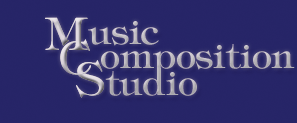Music Education Fundamentals
If you are looking for some music education fundamentals, I've put together a few files that address how we sight sing, what we call note-names, and how I suggest we move forward with music education so that musicianship can be more simple, more enjoyable, more fluid, and...well, easier to "get."
What I propose we do is use Integer Notation to explain notes within scales. I suggest we use images like the clock-o-pitches to show that most scales are simply tones selected from a basic group or set of 12 tones. Our common scales are 7 out of 12 tones, leaving 5 tones out. Singing Integer Notation allows movable do students to find a way out of their "tonal lock," which is a problem I had fairly severely.
I had memorized my intervals in the context of where the voice-leading of those intervals went. You can't memorize a tritone as "Ma-ri-a," because if you do that, what if the tritone resolves inward? 6ths get really messy if you don't think about where they may lead to, and, well, for me, the 50-thousand different things I was supposed to think about while sight singing (OK, where's DO now, did we modulate? ...do do do...la la la...help!) really messed me up.
Switching to German note names helped, and fixed do is OK, but fixed do (French system), in my opinion, leads to a lot of fudging, expecially where there are multiple accidentals involved. German note names make me need to think about what interval I'm singing, and the interval, in a way, isn't ingrained in the system itself.
With Integer Notation Note-Name Syllables, all of the above mentioned problems are quickly and easily resolved. The only thing we then need to be aware of is that the numbers of scale degrees refer to ordinal numbers, not cardinal numbers. When we are speaking the language of harmony and we say I-V-I, I suggest we make ourselves aware of the fact that we are speaking in a harmonic language built on the history of scale degrees (Erste Stufe, Fünfte Stufe). Also, in C Major, for example, "G" is the 5th note.
If we had single syllable note-names for all the notes, we probably wouldn't need this discussion, but we don't. We could sing "see dee eee eff gee," but then the world collapses when we need to sing any sharps or flats. So, we just sing "oh two foh fah sev." We use the syllable "sev" whenever we sing the enharmonic note "G," even if it's spelled F## or Abb. Also, it's perfectly fine to say "sev" is the 5th note in the Major scale of "oh" or "C." Why? Because we know that the note-to-note intervals of the major scale are 221 2 221. Of course we have to leave out a few numbers! Actually, we know exactly how many numbers we leave out, when we sing with Integer Notation Note Names, it's (0 starting note) + 2+2+1+2 = 7. So "sev" is the fifth note of C Major.
With 0-11 as the note names, we can reduce the note names so that with, for example: thee for three, foh for four, sev for seven, nah to avoid the diphthong in nine, etc., we have one syllable for each note. We know where we are within scales, and intervals make sense. We can tune the notes a bit higher and lower, in particular with awareness of the written note (is it written as an Eb or as a D#?).
What makes it even more clear is the magic hands-o-music, on which we can gain a tactile sense for the intervals, scales, tuning, and singing freely.
Enjoy!
--Dainis W. Michel
November 21, 2006
